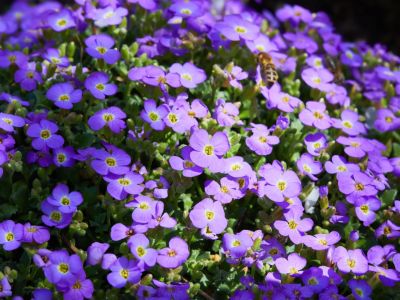Rock cress has many uses in the garden but its most popular uses are as an attractive border in a rock garden or dangling down over a rock wall or ledge. Rock cresses are alpine plants and will thrive where other plants fail, such as on hills and slopes. Purple rock cress ground cover (Aubrieta deltoidea) hugs the ground like a mat and displays rich, purple flowers in April through the middle of May and has a lovely scent. Rock wall cress (Arabis caucasica) is more likely to bloom in white or pink. Both make attractive, low mounds that look great at the edge of retaining wall where they get full sun and excellent drainage.
How to Grow Rock Cress
Rock cress plants are hardy in USDA plant hardiness zones 4-7. They are easily grown from seed and can be directly sown into the garden in early spring or started indoors four to six weeks before the date of your last expected frost. Rock cress prefers full sun, but will tolerate some shade, especially in warmer climates. Space rock cress plants 15 to 18 inches (38 to 45.5 cm.) apart and they will fill in quickly forming a mat in any open space.
Care of Rock Cress Plants
Regardless of the type you choose to grow, the care of rock cress plants is relatively minimal. Water new rock cress plants regularly and only when the soil is dry once they are established. Rock cress ground cover does well in fair soil that has good drainage and is slightly acidic. Applying a light pine needle mulch helps retain moisture and increase acidity. A high nitrogen fertilizer can be applied when first planting and a phosphorus fertilizer just after blooming. Rock cress will bloom the second spring after planting and every year after that. Regular pruning to remove dead flowers will keep the plant healthy and encourage new growth. It is seldom necessary to treat rock cress for pests or disease. Now that you know the basics on how to grow rock cress ground cover, you can add an attractive touch to a rock garden or wall.
